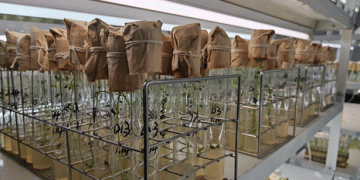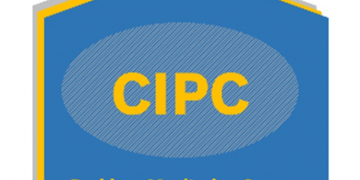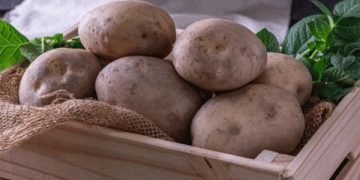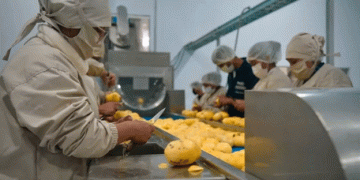Pam Hutchinson draws a parallel between identifying weeds in a potato field and wowing a crowd with a drum solo. She performs both seemingly dissimilar yet related feats at a high level as the University of Idaho Extension potato cropping systems weed scientist, and as a percussionist with the Idaho State Civic Symphony and the Pocatello Municipal Band.
During the Potato Association of America’s annual meeting in Missoula, Montana, on July 19, Hutchinson offered evidence in her talk “Repeated Measures: Music and Research,” supporting her belief that playing music has made her a better scientist.
She emphasized that both research and music strengthen similar neurological pathways, improve cognitive functioning and require recognition of complex patterns. Consider hairy nightshade and cutleaf nightshade – both irksome weeds for potato farmers. They look a lot alike until one more closely examines the lobing and serration patterns in the leaves. And at a cursory glance, a visual depiction of an advanced drum cadence looks similar to a high-level math equation.
“Science and music both use formulas and theories to solve problems,” Hutchinson said. “Music training is similar to research: both have long-term goals and much intense work to get there. In research, it takes weeks, months, years to carry out an experiment before all the data is ready for analysis.”
Hutchinson named her presentation “Repeated Measures” to recognize that determining the effectiveness of a weed control method often means measuring results over time. Similarly, successfully performing a part in a song requires measuring and heeding improvement over time with repeated practice.
On stage, Hutchinson must play rhythmic patterns while keeping proper time. Patterns in a farm field of weed kill or survival over time after herbicide treatment inform Hutchinson as to which post-emergence herbicides to apply from her arsenal of products.
“If you play music a lot, you are a more effective and inventive problem solver, able to make decisions more quickly and efficiently,” Hutchinson said.
Hutchinson reviewed several published studies to support her conclusion. She found research in the journal “Science,” for example, that musical training increases the volume and activity of the corpus callosum, which is a bundle of more than 200 million nerve fibers connecting the right and left sides of the brain.
She points out that drummers are known for being especially skilled problem solvers. In defense of that opinion, Hutchinson referenced a Swedish study highlighting a correlation between the part of the brain that handles rhythmic timing and problem solving. Study participants completed a 60-question test while playing a drum beat, and those who maintained the steadiest beat also had the highest test scores.
There are many examples of famous musicians also being accomplished researchers. Guitarist Brian May, for example, finished a doctorate in astrophysics three decades after putting his pursuit of a Ph.D. on hold to form the rock band Queen.
Hutchinson has also noticed similarities between presenting research data at a conference and performing a live concert.
“Your nerves and excitement, the elation of the applause – it’s really only at a conference or a concert that you as a musician or a scientist get to share what you’re working on,” Hutchinson said.
Hutchinson previously made a similar presentation before the Western Society of Weed Science, focused on the correlation between musical and scientific acuity. She broadened it to cover the similarities of repeated measures for music and research a couple of months ago.
Hutchinson started drum and piano lessons when she was 10 years old, often playing in competitions. She continued drumming through high school and joined a drumline and percussion ensemble while pursuing a bachelor’s degree in agronomy at Iowa State University and master’s degree in weed science at South Dakota State University. When she obtained her promotion and tenure at U of I, she rewarded herself by joining the orchestra and summer band in Pocatello. She’s well known in southeast Idaho for wearing elaborate costumes, once dressing up like a Christmas tree, during the Idaho State Civic Symphony’s annual holiday concert.
She’s also played solos with bands at Aberdeen High School and played with the pit orchestra in the school’s performance of “The Sound of Music,” making thunder and lightning noises with her drums and cymbals.
The most common question asked of Hutchinson after presentations about the connection between music and math and research is whether people can derive a benefit by simply listening to music. While Hutchinson agrees listening to music is a fantastic activity, she explains playing and learning music is what gives the brain a boost.
“The physical playing and reading of the music and translating from what your eyes see to what your hands are doing, that’s what strengthens that connection in the brain,” Hutchinson said. “It’s measuring performance repeatedly to become a better musician and researcher.”
Article author: John O’Connell, Assistant Director of Communications – College of Agricultural and Life Sciences, University of Idaho
(208) 530-5959
joconnell@uidaho.edu
A source: https://www.potatonewstoday.com






